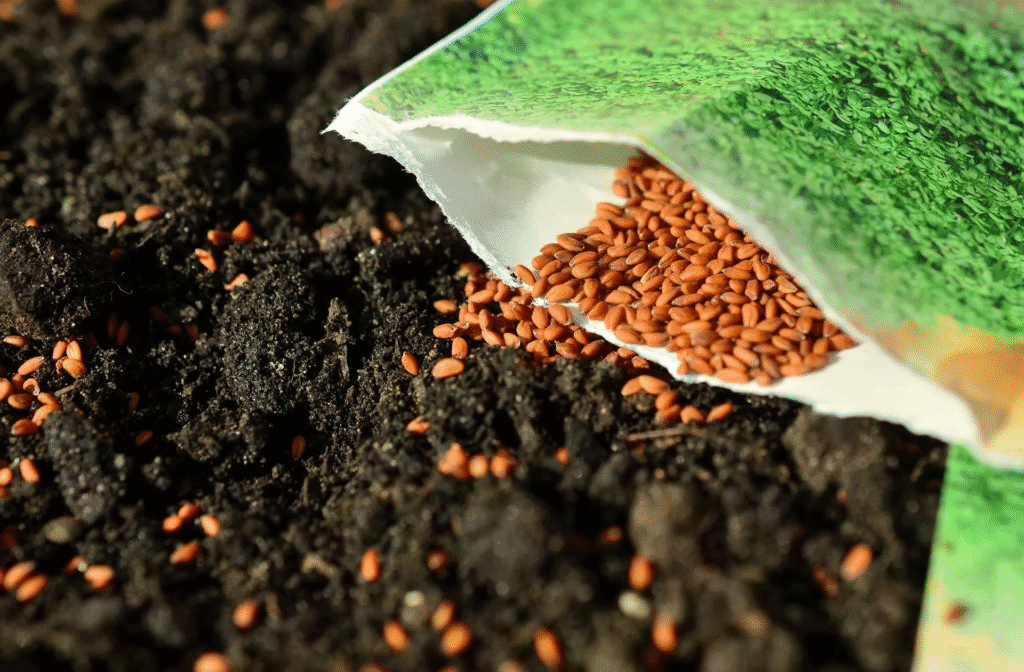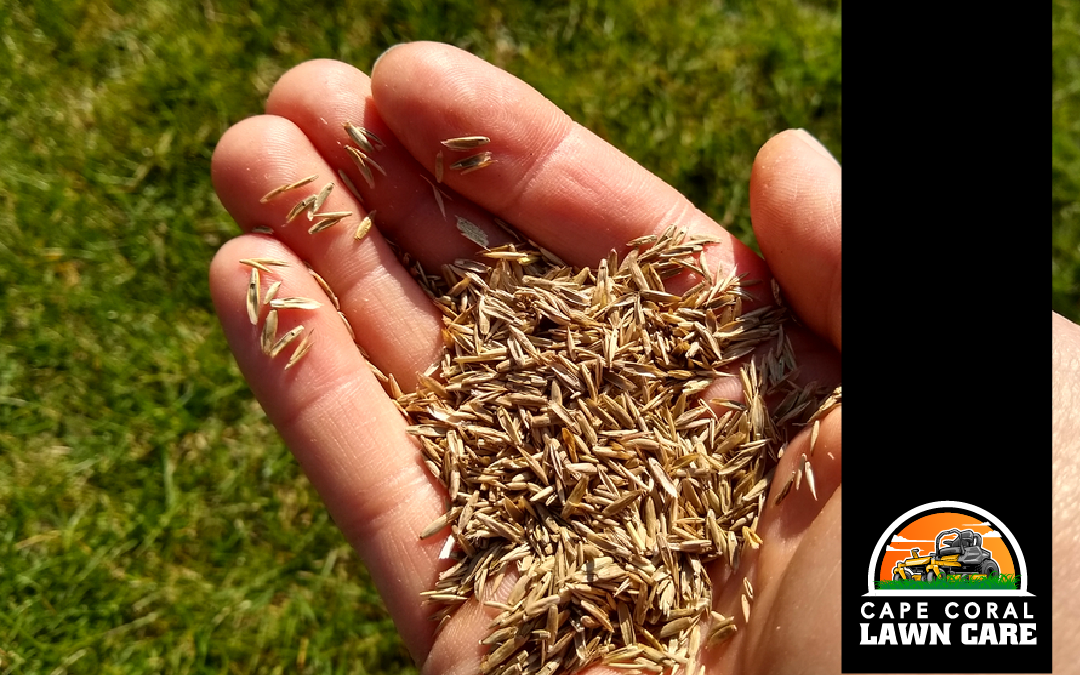Get Ready to Roll Out the Green Carpet, SW Florida!
Are you tired of looking at a lackluster lawn that’s more dirt than dreamy green oasis? You deserve a lawn that’s a showstopper—a vibrant, healthy expanse of grass perfect for summer fun. Think lazy Sundays and delicious BBQs! Then it’s time to learn the art of planting grass seed like a pro!
In this article, we’ll dish out the expert advice on how to plant grass seed for a thicker, sexier lawn that’ll make your neighbors green with envy (pun intended). Get ready to plant! Successful harvests are within reach.
Step 1: Prepare the Soil

Before you even think about sprinkling those tiny seeds, you need to prep the soil. Think of it as setting the stage for a grand performance – you want the perfect conditions for your grass to thrive.
- Test Your Soil: Get a soil test to determine the pH level and nutrient content. SW Florida’s soil can be notoriously sandy, so you may need to add organic matter like compost or topsoil to improve drainage and fertility.
- Remove Debris: Clear the area of any rocks, twigs, and weeds that could compete with your new grass.
- Aerate the Soil: Use a lawn aerator or a fork to loosen the soil and promote healthy drainage.
Step 2: Choose the Right Seed
Not all grass seeds are created equal! For SW Florida’s subtropical climate, you’ll want to choose a seed that’s:
- Drought-Tolerant: Look for varieties like Bermudagrass, Zoysiagrass, or St. Augustinegrass that can handle our region’s dry spells.
- Shade-Tolerant: If your lawn receives partial shade, opt for a seed that can thrive in low-light conditions, like Centipedegrass or Carpetgrass.
- Disease-Resistant: Select a seed that’s bred to resist common lawn diseases like fungal infections or pests.
Step 3: Plant the Seed
Now it’s time to get planting! Planting seeds successfully is easy with these helpful hints. Growth is on the horizon. Time to start!
- Spread the Seed Evenly: Use a spreader or sow the seed by hand, making sure to cover the entire area evenly.
- Rake the Seed In: Use a rake to gently work the seed into the soil, about 1/8 inch deep.
- Water, Water, Everywhere: Keep the soil consistently moist during the germination period (usually 7-14 days).
What Not to Do with Grass Seed
Don’t fall victim to these common mistakes that can sabotage your seed-planting efforts:
- Over-Seeding: Overcrowding happens when you use too much seed; this can prevent successful sprouting.
- Under-Watering: Insufficient moisture can cause the seed to rot or fail to germinate.
- Planting at the Wrong Time: Avoid planting in the peak summer heat or during the winter months when the soil is too cool.
Expert Tips and Tricks
- Use a Starter Fertilizer: Apply a starter fertilizer specifically designed for new seedlings to give them a nutrient boost.
- Maintain Proper Mowing: Keep your mower blade at the recommended height for your grass type to promote healthy growth.
- Monitor for Pests: Those pesky chinch bugs, white grubs, and fire ants? Keep an eye out for them—they can damage your new lawn.

The Final Cut
With these expert tips and a little patience, you’ll be on your way to a thicker, sexier lawn that’s the envy of the neighborhood. Remember to stay vigilant, maintain your lawn regularly, and don’t be afraid to get a little creative with your grass seed.
So, go ahead and roll out the green carpet – your new lawn is waiting!

